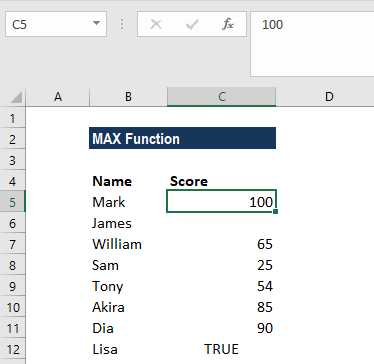
So if I go into Format Cells say that these are Numbers and I want two decimal places, click on OK, then I just think that for those floor areas that looks quite a bit neater. So having selected all of the cells from E5 to E13, note they contain formulas but I can still format the cells to determine how the values are displayed.

I’m going to give all of those floor areas two decimal places so that it looks a lot neater. I tend to be a little fussy about these things. So that means I don’t have to type in all of the individual formulas. So the formula in each case is adapted to suit the position of in this case the floor area cell, the cell in column E, with effectively its row number. If I click in the cell E6 look at the formula, C6*D6. Now I’m going to use the Keyboard Shortcut Control-D to do a Fill Down and I have all of my room areas. But in fact there is another way of doing this, a much easier way of doing this and that is to use Fill because where cells contain formulas Fill, in this case Fill Down, will actually fill down the formulas and adjust the formula in each cell according to its position. Now what I could do is to click into E6 and type in the corresponding formula for the area of the living room floor multiplying C6 by D6. So let me tick that and I can see that the floor area of that room is 28 square meters. So once again let me first of all zoom in and let me click into E5 and type in a formula. So if I wanted, for example, to work out the floor area of the dining room then to get the area of the floor I would multiply the length by the width.

Now the first thing I want to do is to work out the floor area of the whole house because I’m going to work out a budget cost for carpeting this house. Now I’m doing these calculations in meters and square meters but just think of them in any units that you’re familiar with.

So I have a dining room with dimensions 5 meters by 5.6 meters and so on. And I have the length and width of each of the rooms in the house. I have here a simple list of rooms in a house that’s going to be refurbished. In this section we’re going to continue to look at formulas and functions and we’re going to concentrate on a more complex example of the use of formulas. Like what you see? Get our complete Microsoft Excel 2016 training courses for beginner, intermediate and advanced learners.

Adobe Photoshop Elements 11 – 12 Hours Video Training Course.it is possible to create a column with formula =IMAGINARY(), then use the resulting ordinary numbers in a simple COUNTIF or SUMIF function, but I cant have a new column). I need to do this without creating a new column (e.g. Then I'd like to find that all the positive imaginary numbers add up to 5, while the negative imaginary numbers add up to 11. =COUNTIF(C10:C20, "*-*i") for cells with negative imaginary numbers.Ģ) Similarly, I'd like to do a conditional sum of the magnitudes of the negative OR positive imaginary values. =COUNTIF(C10:C20,"*i") for counting cells with positive imaginary numbers, The following works but is inelegant and does not help with item (2). 0+2i or 0-3i).ġ) I'm trying to count the number of cells in the list that have a positive imaginary component, and how many have a negative imaginary component. 6), some of which have an imaginary component (e.g. I have a list of numbers, some of which are ordinary real numbers (e.g.


 0 kommentar(er)
0 kommentar(er)
